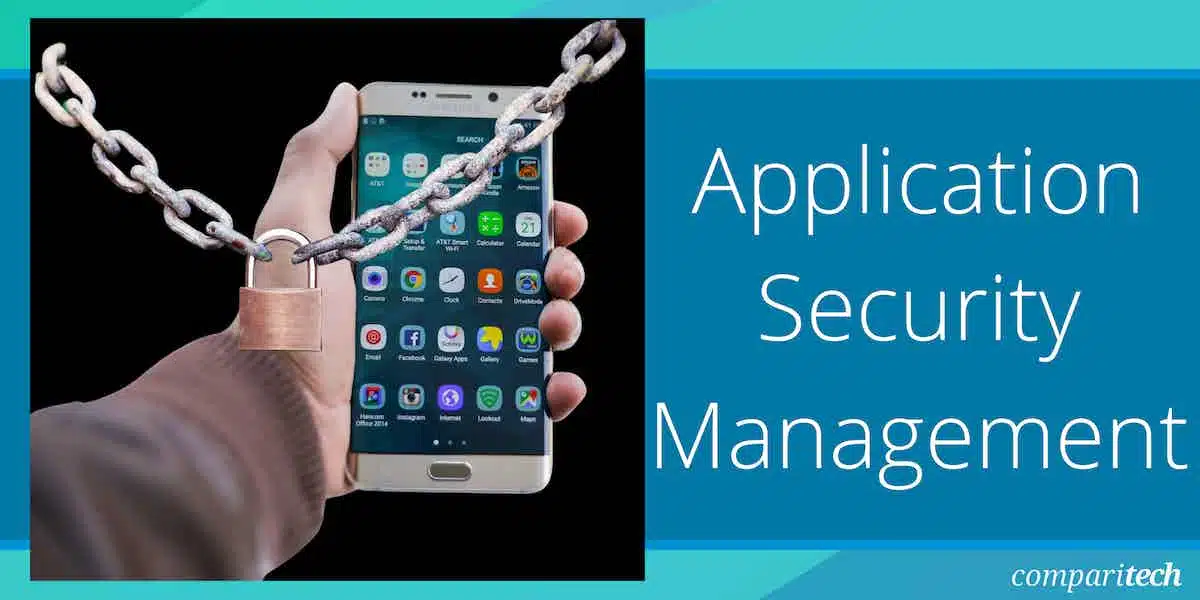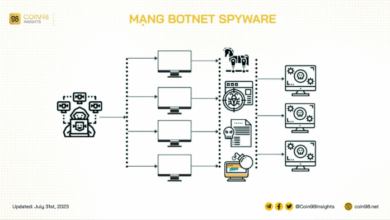Microsoft Talks Application Management Security A Deep Dive
Microsoft talks application management security, exploring the critical importance of safeguarding software from threats. This discussion delves into securing applications across various platforms, from web and mobile to desktop and cloud-based solutions. We’ll examine the core principles of a strong application security strategy, highlighting the specific threats and vulnerabilities prevalent in today’s digital landscape, and how Microsoft’s tools and technologies can mitigate these risks.
The discussion will cover a range of topics, including defining application management security, outlining common attack vectors, and exploring security controls and best practices. We’ll analyze Microsoft’s robust suite of security tools, including Azure Security Center and Microsoft Defender, and examine their effectiveness in protecting applications. Finally, we’ll delve into incident response strategies and case studies, illustrating both successful implementations and lessons learned from security breaches.
Introduction to Application Management Security

Application management security encompasses the multifaceted strategies and measures implemented to safeguard applications throughout their lifecycle. This includes development, deployment, operation, and eventual retirement. A robust security posture is paramount for maintaining data integrity, preventing unauthorized access, and ensuring compliance with industry regulations. This is especially critical in today’s interconnected digital landscape, where applications are the primary interface for users and data.A robust application security strategy requires a holistic approach, combining technical controls, security awareness training, and proactive threat intelligence.
This holistic approach addresses vulnerabilities at every stage, from design to deployment, ensuring applications are resilient to modern threats. Key aspects include implementing secure coding practices, employing strong authentication and authorization mechanisms, and continuously monitoring and patching applications for vulnerabilities.
Key Aspects of a Robust Application Security Strategy
A robust application security strategy encompasses a multitude of measures. These measures aim to protect applications from various threats, ensuring data integrity and availability. Proactive security measures are critical in preventing breaches.
- Secure Design and Development: Implementing secure coding practices and incorporating security considerations into the initial design phase is essential. This includes identifying potential vulnerabilities and implementing mitigations from the outset.
- Strong Authentication and Authorization: Robust authentication and authorization mechanisms are crucial for controlling access to applications and data. Multi-factor authentication and role-based access control are examples of such mechanisms.
- Regular Vulnerability Assessments and Penetration Testing: Regularly assessing applications for vulnerabilities and conducting penetration testing are crucial to identify and address weaknesses before they can be exploited. This helps prevent potential security breaches.
- Continuous Monitoring and Patching: Monitoring application activity and promptly patching vulnerabilities are essential to maintaining a strong security posture. This proactive approach minimizes the risk of exploitation.
- Incident Response Plan: Having a comprehensive incident response plan in place is crucial to address security breaches effectively and minimize damage.
Importance of Security in the Microsoft Ecosystem
Microsoft’s ecosystem encompasses a wide range of applications, from web and mobile to desktop and cloud-based solutions. Ensuring the security of these applications is critical for maintaining user trust and protecting sensitive data. The diverse nature of Microsoft applications necessitates a layered security approach.
Application Types Managed by Microsoft
| Application Type | Description | Security Considerations |
|---|---|---|
| Web Application | Web applications provide access to services and data through web browsers. | Security considerations include protecting against cross-site scripting (XSS), SQL injection, and other common web vulnerabilities. Secure authentication and authorization are crucial. |
| Mobile Application | Mobile applications provide access to services and data on mobile devices. | Mobile applications require robust security measures, including secure communication channels, data encryption, and access controls. Protecting against malware and unauthorized access is paramount. |
| Desktop Application | Desktop applications provide functionality on local computers. | Security considerations include protecting against malware, unauthorized access to local data, and ensuring compliance with security policies. |
| Cloud-based Application | Cloud-based applications leverage cloud infrastructure for hosting and delivery. | Security considerations for cloud applications include securing cloud resources, controlling access to data, and adhering to cloud security best practices. Data encryption and compliance with industry standards are critical. |
Threats and Vulnerabilities
Application security is paramount in today’s digital landscape. Protecting applications from malicious attacks is crucial to maintaining data integrity, user trust, and operational stability. Understanding the common threats and vulnerabilities targeting applications, particularly within the Microsoft ecosystem, is essential for effective security strategies.
Common Security Threats
Understanding the diverse range of attacks targeting applications is vital for implementing robust security measures. Malicious actors employ various techniques to exploit vulnerabilities and gain unauthorized access. These threats encompass a spectrum of tactics, from exploiting software flaws to social engineering. Careful analysis of potential attack vectors and their potential impact is crucial for proactive defense.
Microsoft’s talk on application management security is crucial, especially given the increasing need for robust protection. This directly relates to the recent news of Intel partnering with Wave Systems to build security directly into their chips, a significant advancement. This innovative approach, as detailed in intel partners with wave systems to put security into chips , suggests a shift towards proactive security measures.
Ultimately, the future of application management security depends on such proactive strategies, and Microsoft’s insights are vital to navigating this evolving landscape.
Potential Vulnerabilities in Microsoft Applications
Microsoft applications, ubiquitous in business and personal computing, are not immune to vulnerabilities. These applications, with their complex functionalities and extensive user bases, represent attractive targets for attackers. Potential vulnerabilities span a wide range of areas, from outdated software components to insecure coding practices within the applications themselves. Thorough security assessments are essential to identify and mitigate these vulnerabilities.
Attack Vector Comparison
Different attack vectors leverage distinct approaches to compromise applications. Understanding the nuances of each vector is critical for implementing effective countermeasures. Attack vectors range from exploiting known software flaws to manipulating user behavior through social engineering tactics. Their varying complexities and impacts necessitate tailored mitigation strategies.
Common Attack Vectors and Their Impact
| Attack Vector | Description | Impact | Mitigation Strategy |
|---|---|---|---|
| SQL Injection | An attack where malicious SQL code is inserted into input fields to manipulate database queries. | Unauthorized data access, modification, or deletion, potentially leading to data breaches or system compromise. | Input validation, parameterized queries, and stored procedures. |
| Cross-Site Scripting (XSS) | An attack where malicious scripts are injected into a legitimate website. | Compromising user accounts, stealing sensitive information, or redirecting users to malicious websites. | Output encoding, input validation, and secure coding practices. |
| Cross-Site Request Forgery (CSRF) | An attack where a malicious website or email tricks a user into performing an unwanted action on a trusted site. | Unauthorized actions, such as transferring funds or changing account settings. | CSRF tokens, HTTP methods, and double submission cookies. |
Security Controls and Best Practices
Application management security hinges on robust security controls and best practices throughout the development lifecycle. These measures protect applications from vulnerabilities and threats, ensuring data integrity and system availability. Implementing secure development practices proactively minimizes risks and enhances the overall security posture of the applications.
Security Controls for Application Management
Effective application security relies on a multi-layered approach employing various security controls. These controls address different stages of the application lifecycle, from design to deployment and maintenance. They are crucial for mitigating potential risks and vulnerabilities.
- Input Validation: Validating user input is paramount to prevent malicious code injection attacks. This involves meticulously checking the type, format, and length of input data. For instance, a login field should only accept alphanumeric characters and prevent SQL injection attempts by escaping special characters in user-supplied data.
- Access Control: Restricting access to sensitive data and functionalities is vital. Implementing role-based access control (RBAC) ensures that users only have access to resources necessary for their job functions, minimizing the impact of compromised accounts. This strategy significantly reduces potential damage in case of security breaches.
- Authentication: Robust authentication mechanisms are essential to verify the identity of users. Employing strong passwords, multi-factor authentication (MFA), and other secure authentication methods help prevent unauthorized access. Implementing MFA, for example, requires users to provide multiple verification factors (e.g., password, one-time code) before gaining access, significantly enhancing security.
- Authorization: Authorization controls determine what actions a user can perform on authorized data and resources. A user might have access to a database but not be permitted to modify it. Granular authorization rules ensure that only authorized actions are executed, thereby preventing unauthorized data modifications.
Best Practices for Secure Application Development
Adhering to best practices during the application development lifecycle significantly reduces vulnerabilities. These best practices emphasize proactive security measures throughout the entire process.
- Secure Coding Principles: Implementing secure coding principles, like avoiding buffer overflows and preventing SQL injection, is crucial. Secure coding principles are integrated into the application development process, helping prevent vulnerabilities from entering the codebase. Following coding guidelines and employing secure coding tools minimizes the likelihood of introducing vulnerabilities. For instance, using parameterized queries is a fundamental secure coding principle that prevents SQL injection vulnerabilities.
- Regular Security Assessments: Regular security assessments, such as penetration testing, are crucial to identify and address vulnerabilities proactively. These assessments simulate real-world attacks, enabling developers to strengthen their defenses against various threats. These evaluations help uncover weaknesses that could be exploited by attackers, and help to develop more robust security practices.
- Security Training: Providing security training to development teams helps build a security-conscious culture. Training equips developers with the knowledge and skills to write secure code and identify potential vulnerabilities. Security training programs cover best practices and security awareness, fostering a culture of security within the team.
Comparison of Security Controls
The table below summarizes different security controls, their descriptions, and implementation details.
| Control Type | Description | Implementation Details |
|---|---|---|
| Input Validation | Ensuring that input data conforms to expected formats and constraints. | Using input validation libraries, whitelisting, and regular expressions to check data types, lengths, and patterns. |
| Access Control | Restricting access to resources based on user roles and permissions. | Implementing role-based access control (RBAC) systems and using access control lists (ACLs). |
| Authentication | Verifying the identity of users attempting to access resources. | Implementing strong password policies, multi-factor authentication (MFA), and secure authentication protocols. |
| Authorization | Determining what actions a user is permitted to perform on authorized resources. | Defining granular permissions for users based on their roles and the resources they need to access. |
Microsoft Tools and Technologies
Microsoft provides a robust suite of tools and technologies to enhance application management security. These tools empower organizations to build, deploy, and manage applications securely across various environments, including cloud-based platforms. This section explores how these tools can be leveraged for improved security posture.
Azure Security Center
Azure Security Center is a comprehensive security management service that provides a centralized platform for monitoring and managing security across Azure resources. It continuously analyzes configurations and activities to identify potential threats and vulnerabilities. This proactive approach helps prevent incidents before they impact applications. Security Center integrates with other Microsoft services, enabling a unified security approach. It offers threat intelligence feeds, automated threat responses, and security recommendations to improve overall security posture.
Microsoft Defender for Cloud
Microsoft Defender for Cloud extends security capabilities beyond Azure resources, encompassing hybrid and on-premises environments. This cloud-native security solution proactively detects and responds to threats, providing real-time threat intelligence. It helps organizations implement a comprehensive security strategy, integrating with various tools and technologies. Its automated threat detection capabilities minimize security risks by automating responses to threats, minimizing the time it takes to respond and reducing damage.
Azure Active Directory
Azure Active Directory (Azure AD) is a crucial component for securing access to applications and resources. It acts as a centralized identity and access management solution. Azure AD supports multi-factor authentication, enabling strong authentication measures. This robust authentication protects sensitive data and resources. Its role-based access control (RBAC) model allows granular control over user permissions, which further enhances security.
Azure DevOps for Secure Development
Azure DevOps is a suite of development tools that can be used for implementing secure development practices. Integrating security checks into the development lifecycle is a key element of the process. DevOps tools can automatically scan code for vulnerabilities, providing early identification and remediation. This helps organizations implement security best practices from the outset of the development process, ensuring that applications are more secure.
Using CI/CD pipelines within Azure DevOps allows continuous integration and continuous delivery (CI/CD), helping to detect and resolve security issues as early as possible in the development process.
Implementing Security with Microsoft Defender
Microsoft Defender provides comprehensive security capabilities to protect applications and data. Defender’s threat intelligence is used to identify and block malicious activities. This is a proactive approach to prevent threats from reaching applications. Microsoft Defender for Cloud integrates seamlessly with other Microsoft tools, creating a unified security platform. It integrates threat intelligence and automated responses to help secure applications from threats.
Microsoft Security Tools Overview
| Tool | Description | Use Cases | Benefits |
|---|---|---|---|
| Azure Security Center | Centralized security management for Azure resources. | Monitoring, vulnerability assessment, threat detection. | Proactive threat detection, automated responses, security recommendations. |
| Microsoft Defender for Cloud | Extends security to hybrid and on-premises environments. | Threat detection, response, compliance. | Real-time threat intelligence, automated threat responses, comprehensive security. |
| Azure Active Directory | Centralized identity and access management. | User authentication, access control, authorization. | Strong authentication, role-based access control, enhanced security. |
Security Monitoring and Incident Response
Application security is not a one-time fix; it’s an ongoing process that requires continuous monitoring and proactive response to threats. Effective security monitoring and incident response are crucial for detecting vulnerabilities, containing breaches, and minimizing damage. This necessitates a robust strategy encompassing various methods and procedures.A comprehensive security posture involves a dynamic approach to identifying and mitigating risks.
This means continually evaluating and adapting to emerging threats and vulnerabilities in the application landscape.
Methods for Monitoring Application Security
Continuous monitoring of application security is essential to identify and address potential issues promptly. Various methods can be employed, ranging from automated tools to manual reviews. This requires a structured and proactive approach.
- Security Information and Event Management (SIEM) systems collect and analyze logs from various sources, providing a centralized view of security events. This helps in identifying suspicious activities and potential threats.
- Intrusion Detection Systems (IDS) and Intrusion Prevention Systems (IPS) monitor network traffic for malicious activity, alerting security personnel to potential threats. These systems are vital for early detection.
- Application Security Testing (AST) tools automate the process of finding vulnerabilities in applications, identifying potential weak points and addressing them before they are exploited.
- Regular vulnerability assessments are critical to proactively identify weaknesses in applications and infrastructure. They should be conducted regularly, especially after updates or code changes.
Steps Involved in Incident Response, Microsoft talks application management security
A well-defined incident response plan is critical for handling security incidents effectively. A robust plan ensures that organizations can respond to incidents in a structured and coordinated manner.
- Detection and Analysis: The process begins with identifying an incident, analyzing the impact, and determining the scope of the breach. Rapid detection is key to containment.
- Containment: Isolate the affected systems and applications to prevent further damage and escalation of the incident. This is a crucial step in limiting the spread of malicious activity.
- Eradication: Identify and eliminate the root cause of the incident, including removing malicious code, patching vulnerabilities, and restoring systems to a secure state. This phase ensures the issue is resolved permanently.
- Recovery: Return the affected systems and applications to their normal operating state. This involves restoring data, verifying functionality, and testing the recovery process.
- Post-Incident Activity: Conduct a thorough review of the incident response process, identify lessons learned, and implement improvements to prevent future incidents. Post-mortem analysis is crucial for future preparedness.
Importance of Security Logging and Auditing
Comprehensive security logging and auditing provide valuable insights into application activity and security events. This enables proactive identification and resolution of potential vulnerabilities.
Detailed logs and audits are essential for forensic analysis in case of security breaches. This data is critical in understanding the nature and scope of the incident and identifying potential attackers.
Microsoft’s recent discussions on application management security are interesting, especially considering their broader plans for expanding media center PCs in Europe and Asia. This expansion, detailed in this article , suggests a focus on user-friendly computing experiences. Ultimately, robust security measures for these new devices will be crucial for Microsoft’s success in this evolving market.
Process for Handling Security Breaches
A formal process for handling security breaches is essential to ensure a coordinated and effective response. This should be documented and tested regularly.
- Establish a dedicated incident response team: This team should be responsible for handling and coordinating the response to security incidents.
- Develop a detailed incident response plan: The plan should Artikel the steps to be taken in the event of a breach, including communication protocols, escalation procedures, and roles and responsibilities.
- Establish clear communication channels: Communication with affected stakeholders, including users, management, and law enforcement, is vital. Prompt and transparent communication is crucial.
- Conduct a thorough investigation: Identify the cause, scope, and impact of the breach. Forensic analysis plays a critical role.
- Implement corrective actions: Mitigate the identified vulnerabilities and strengthen security controls to prevent future incidents. Proactive measures are key to ongoing security.
Structured Approach to Threat Detection
A structured approach to threat detection is critical to identify and respond to threats effectively. This should incorporate proactive and reactive measures.
Microsoft’s talks on application management security are crucial, especially considering the rise in software piracy. Symantec’s recent move to require product activation, as detailed in symantec moves against piracy with product activation requirements , highlights the growing need for robust security measures. This proactive approach, like Microsoft’s strategies, is essential for protecting software investments and maintaining the integrity of digital environments.
- Develop a threat model: Identify potential threats and vulnerabilities to the application. This involves a detailed assessment of potential attack vectors.
- Implement security controls: Implement appropriate security controls to mitigate identified threats. This involves a combination of technical, administrative, and physical controls.
- Establish monitoring and alerting systems: Set up monitoring systems to detect suspicious activity and trigger alerts. This should be comprehensive and dynamic.
- Analyze alerts and logs: Analyze alerts and logs to identify potential threats and take appropriate actions. This requires trained personnel.
- Implement incident response procedures: Develop and test incident response procedures to handle security incidents. Regular exercises and drills are essential.
Case Studies

Application security isn’t just about theoretical best practices; it’s about real-world implementations and the tangible impact of vulnerabilities. Case studies offer valuable insights into successful implementations, security breaches, and the importance of proactive measures in application management. These examples highlight both the benefits of strong security practices and the devastating consequences of neglecting them.Understanding how others have navigated these challenges provides a wealth of knowledge, helping organizations proactively mitigate risks and enhance their own security postures.
Examining successful responses to security incidents, as well as the failures that spurred them, is critical for learning and adapting.
Successful Application Security Implementation
A well-executed application security implementation is a testament to proactive planning and rigorous execution. A hypothetical example involves a fintech company that prioritized secure coding practices throughout the development lifecycle. By integrating security tools and employing penetration testing at each stage, the company identified and remediated vulnerabilities early. This approach not only prevented potential breaches but also reduced the cost of remediation in the long run.
They successfully implemented automated security scanning tools integrated into their CI/CD pipeline, ensuring every code change was scrutinized for vulnerabilities. This rigorous approach, combined with a culture of security awareness, resulted in a demonstrably more secure application.
Security Breach and Mitigation
Security breaches, unfortunately, are a stark reality. Consider a retail company that experienced a data breach due to a vulnerability in their online payment gateway. The breach compromised customer credit card information. The company’s incident response team, however, acted swiftly and decisively. They immediately shut down the compromised systems, notified affected customers, and engaged a forensic team to analyze the breach.
They implemented stronger authentication protocols, improved their security monitoring system, and strengthened their data encryption. This case underscores the importance of a robust incident response plan and the crucial role of rapid mitigation to minimize damage.
Importance of Secure Coding
Secure coding practices are fundamental to preventing vulnerabilities. A significant number of security breaches stem from flaws introduced during the development process. A well-documented example involves a software company that experienced a critical vulnerability in their flagship product due to a coding error. The flaw allowed unauthorized access to sensitive data. After thorough analysis, the team implemented a secure coding training program for all developers, incorporating security best practices into their development methodologies.
They introduced static analysis tools and implemented code reviews, significantly reducing the likelihood of similar errors in the future.
Successful Incident Response Example
An effective incident response is critical in containing and recovering from security breaches. A social media platform, faced with a widespread phishing campaign targeting user accounts, initiated a swift incident response plan. They quickly identified the source of the attack, blocked malicious links, and communicated with affected users to provide immediate security advice. They worked with law enforcement to track down the perpetrators, and implemented additional security measures to prevent future attacks.
This example illustrates the importance of having a pre-defined, tested incident response plan that’s executed promptly and effectively.
Closure: Microsoft Talks Application Management Security
In conclusion, Microsoft talks application management security, emphasizing the multifaceted approach needed to protect applications. By understanding the threats, vulnerabilities, and available security controls, organizations can proactively safeguard their applications and maintain data integrity. The discussion highlights the critical role of Microsoft tools and technologies in supporting a robust security posture, ultimately ensuring the reliability and safety of software solutions.







